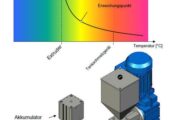Hotmelt Technology
/
Extruder Technology
The extruder melting technology for standard or non-reactive hotmelt in granule-like form melts the adhesive as required and gently. The granulate trickles from the tank into the extruder screw, which is cold at the beginning, and is continuously conveyed, compacted and heated. At the end of the screw, the hotmelt is in a plastic/liquid and air-free state and is conveyed directly into a heating hose by the resulting pressure. Usually a storage/volume dosing device is interposed in order to apply or even inject the adhesive with the required accuracy and pressure. For the sensitive PA hotmelt, which is often used for low-pressure hotmelt casting, the extruder is the bigger investment, but it pays for itself in a very short time, because of the best quality, practically no cleaning effort, quick changeover etc.
balti also has a range of extruders in its program (1, 4, 16, 60, 120 kg/h) for the best process for hotmelt in granulate form.
The extruder melting technology for standard or non-reactive hotmelt in granule-like form melts the adhesive as required and gently. The granulate trickles from the tank into the extruder screw, which is cold at the beginning, and is continuously conveyed, compacted and heated. At the end of the screw, the hotmelt is in a plastic/liquid and air-free state and is conveyed directly into a heating hose by the resulting pressure. Usually a storage/volume dosing device is interposed in order to apply or even inject the adhesive with the required accuracy and pressure. For the sensitive PA hotmelt, which is often used for low-pressure hotmelt casting, the extruder is the bigger investment, but it pays for itself in a very short time, because of the best quality, practically no cleaning effort, quick changeover etc.
balti also has a range of extruders in its program (1, 4, 16, 60, 120 kg/h) for the best process for hotmelt in granulate form.

